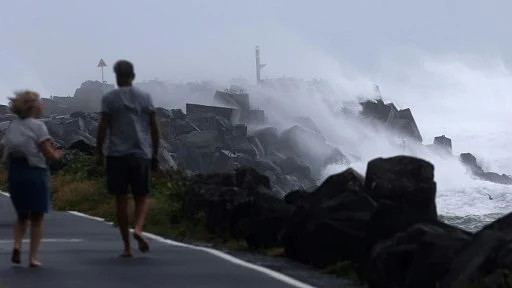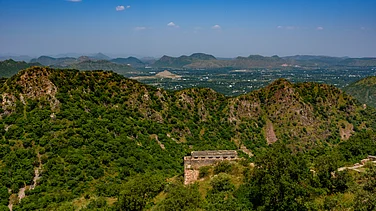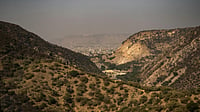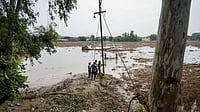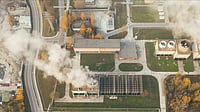Australia ordered thousands of people in its Eastern regions due to evacuate before Tropical Cyclone Alfred hits land on March 8, as the storm brought heavy rain, huge waves and strong winds that led to power outages, swamped beached and shutdown of airports, reported Reuters.
Alfred’s slow progress toward the coast has caused concerns as it could bring a prolonged period of heavy rain. According to Reuters, it is expected to hit land as a Category 2 storm north of Brisbane, Australia’s third-most populous city.
Wind gusts of more than 100 kph (62 mph) lashed the coastal regions of Queensland and New South Wales states overnight. The storm moved slowly west 120 km (75 miles)from Brisbane and 85 kilometres (53 miles) from the tourist city Gold Coast, the weather bureau told Reuters.
According to reports, Alfred is being described as a "very rare event" for Brisbane, the capital of Queensland, which was last hit by a cyclone more than half a century ago in 1974. The city of about 2.7 million had near misses from cyclones in 1990 and 2019.
Is Climate Change to Blame?
The Guardian reported that tropical cyclones are becoming more intense due to a rapidly heating world caused by the burning of fossil fuels. The planet and oceans are absorbing more of the sun's energy because of the increased greenhouse gases in the atmosphere.
A study by Advancing Earth and Space Sciences found that Earth's tropical regions are moving further towards the poles and this change is being caused by human activities affecting the oceans. According to another study published in the journal, Nature, scientists found that on average, the location where cyclones reach their maximum intensity has been moving closer to the poles.
According to The Guardian, Cyclone Alfred formed in the Coral Sea towards the end of February when sea surface temperatures were almost 1 degree Celsius hotter than usual.
Data from the Bureau of Meteorology shows that ocean temperatures off Brisbane and to the south have been between 0.5 degree Celsius and 1 degree Celsius higher than usual in recent days, reported The Guardian.
On March 4, Tropical Cyclone Alfred moved far enough south to interact with a weather system common at lower latitudes – an area of high pressure – which pushed the cyclone west towards the south-east Queensland coastline. By March 5, Cyclone Alfred was moving through this area as it neared the coast. It was expected to cross on Saturday morning as a category one system.





